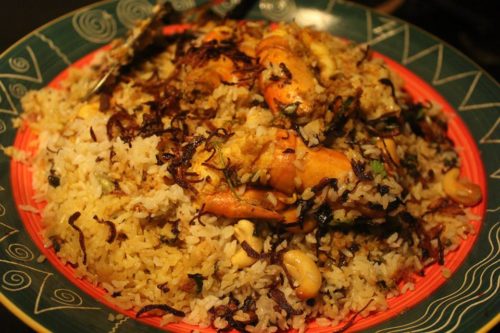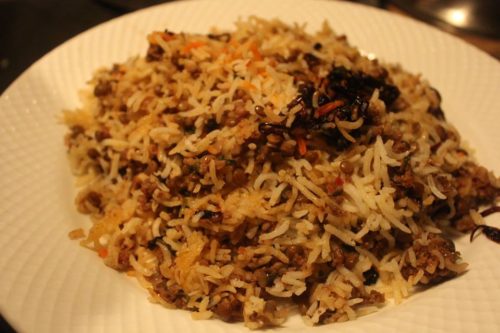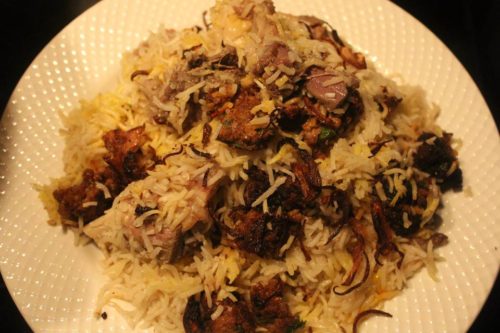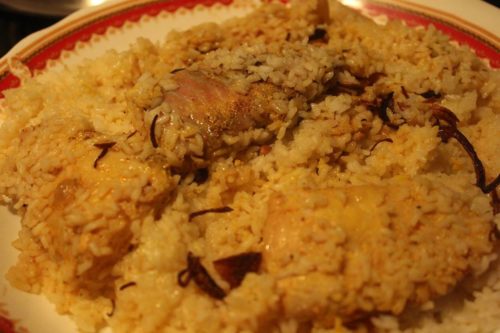ForkTales Social Tables – Biryanis from Beyond
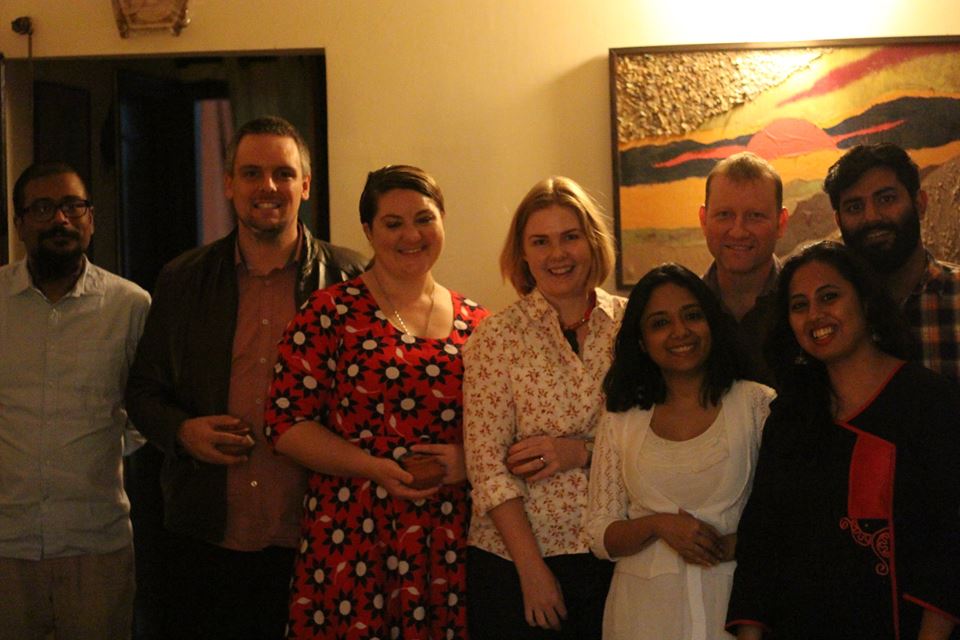
In one of our pop-ups, we brought to the table four biryanis from across the sub-continent that are relatively lesser known than their more famous cousins – Dhakai Fish Biryani, Thalessery Chemmeen Biryani, Memoni Keema-Masoor Biryani and the Rampuri Do-Goshta Biryani.
We started the evening with a marigold and lemon tea and proceeded to Prince Morad Baksh’s favourite – warm comforting bowls of Moradabadi daal, smooth, tangy, sweet with a crunch of papris. The bowls of daal formed the perfect backdrop for stories and anecdotes that traced India’s history through the march of the biryani across the sub-continent. We selected these four keeping in mind their diverse taste, geography and different timelines at which they became a part of the great biryani legend.
The biryanis we served are:
- Dhakai Fish Biryani from Bangladesh
- Thalassery Chemmeen Biryani from North Kerala
- Keema-Masoor Biryani from the small Memoni community in Kathiwar and Kutch in Gujarat
- Rampuri Do-Goshta Biryani from the erstwhile princely state of Rampur in Uttar Pradesh
The Dhakai Fish Biryani from Bangladesh is sublime and fragrant. Originally made with the hilsa that lends its flavour to the biryani, we made it with fillets of bhekti and in a hilsa stock. The Thalassery Chemmeen Biryani from North Kerala belongs to the Moplah or Mapilla community. It is a rich, bold biryani which craftily blends spices and nuts that the Arabs traded in to result in a pot that is extremely balanced, aromatic but not hot. The use of jeera samba rice stands out in this biryani. The Keema-Masoor Biryani from the small Memoni community in Kathiwar and Kutch in Gujarat is an unique combination of pulse, minced meat and rice. The biryani has a hint of heat from the addition of green chillies. The Rampuri Do-Goshta Biryani from the erstwhile princely state of Rampur in Uttar Pradesh is test of patience. The rice is cooked in yakhni made with mutton trotters and spices along with tender pieces of mutton and kebabs made with minced mutton. The rice is flavoured with whole spices and saffron and the meat has to be melt in the mouth.
Every guest had their own favorites and interestingly each biryani had a taker when preferences were discussed towards the end of the meal. The moral of the story – no matter which part of the land you pick it from, a biryani never fails to impress and there is one for every palate. P.S. This story would be incomplete without the mention of the conversations over food, which is at the heart of Social Tables. Last night the heart was in a mood to fool around! Somewhere between mention of a rice cake, how rice can be sticky and sticky rice being an ingredient or mortar of ancient buildings in the east and far east, we found ourselves animatedly talking about how one can survive licking walls of forts and scraping them for edible powder! We thankfully stopped at the suggestion of having flavored walls and moved on to real-time food.
